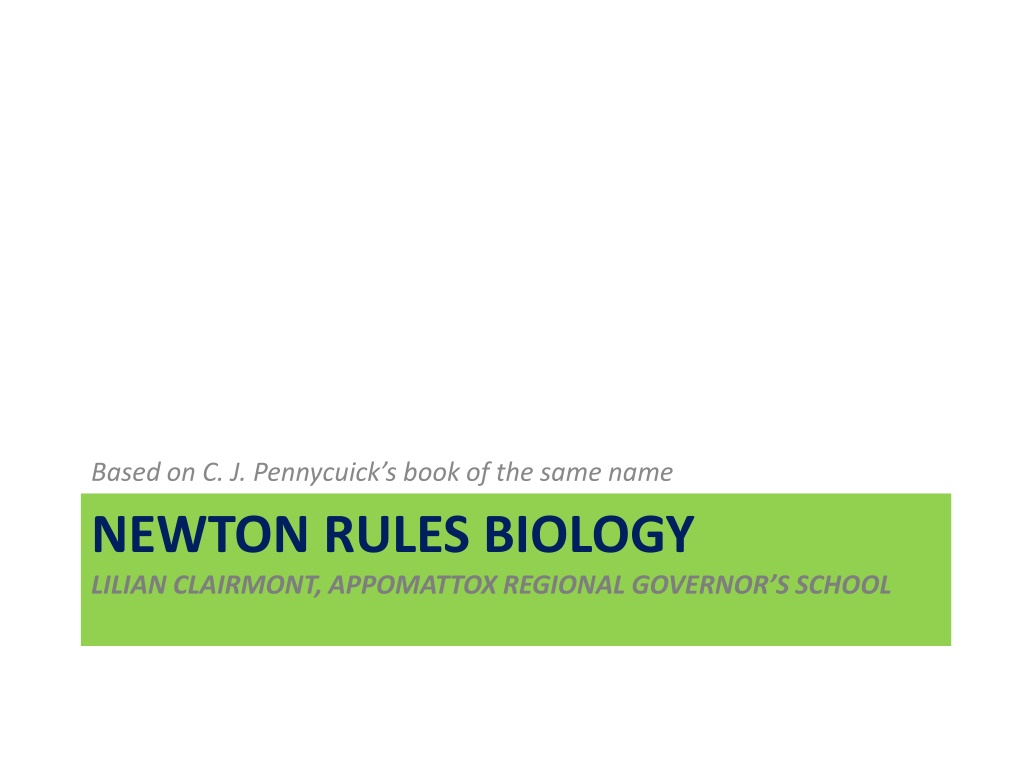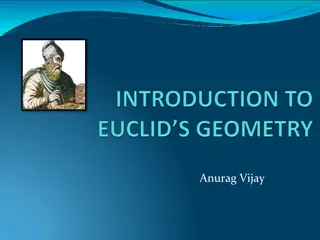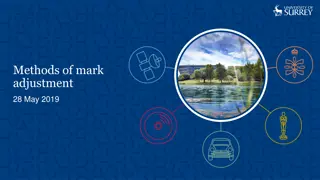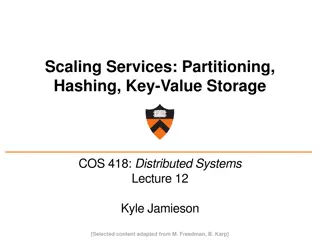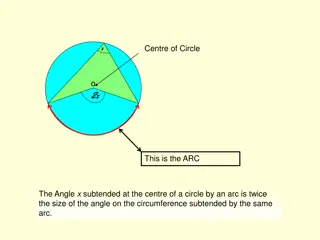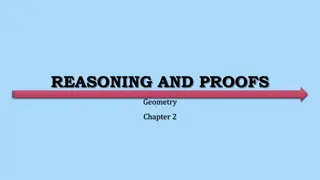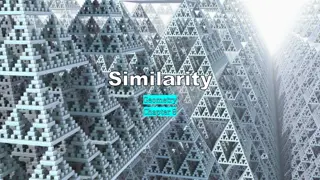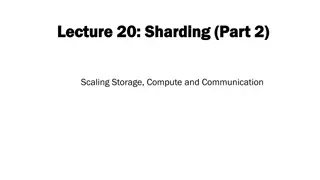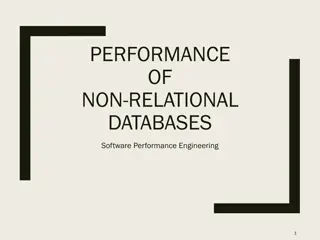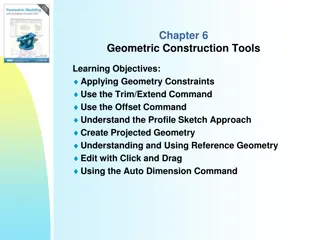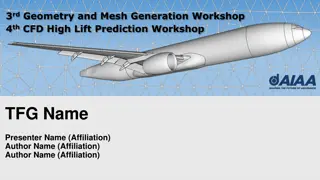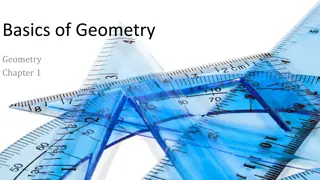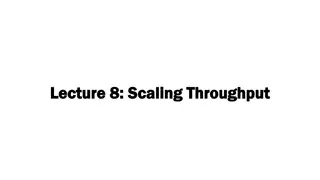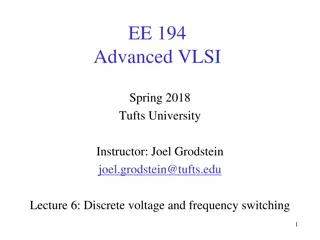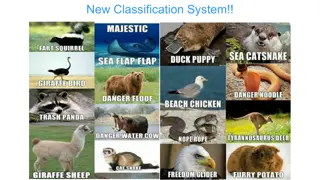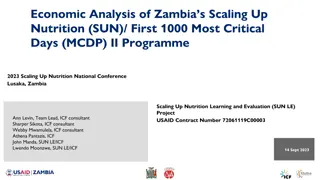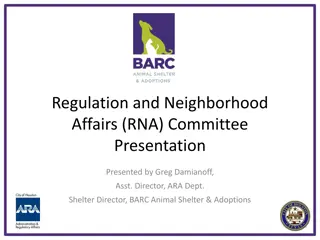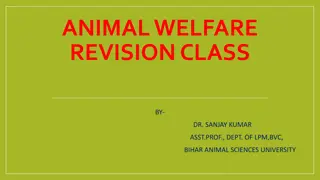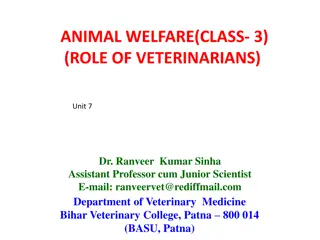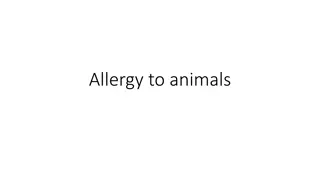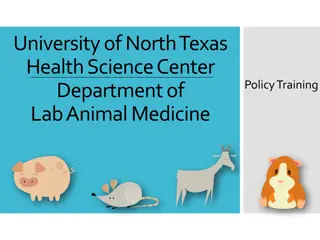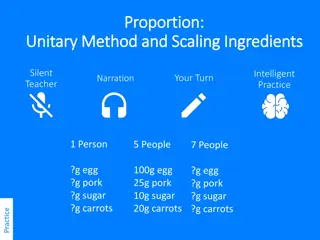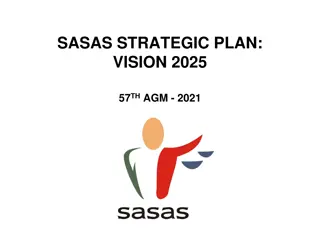Exploring Animal Performance Through Scaling and Geometry
This presentation delves into the impact of scaling and geometric similarity on animal performance, drawing from C.J. Pennycuick's work "Newton Rules Biology." Discussing factors such as gravity, surface area, and volume, it examines how animal characteristics change with size variations. The study highlights how geometrically similar animals, despite differing in size, possess identical shapes, shedding light on their behavior and capabilities.
Download Presentation

Please find below an Image/Link to download the presentation.
The content on the website is provided AS IS for your information and personal use only. It may not be sold, licensed, or shared on other websites without obtaining consent from the author. Download presentation by click this link. If you encounter any issues during the download, it is possible that the publisher has removed the file from their server.
E N D
Presentation Transcript
Based on C. J. Pennycuicks book of the same name NEWTON RULES BIOLOGY LILIAN CLAIRMONT, APPOMATTOX REGIONAL GOVERNOR S SCHOOL
INTRODUCTION This talk is based on the book Newton Rules Biology , by C. J. Pennycuick. Colin Pennycuick was a British scientist who spent much of his life studying bird flight. He made many contributions to ecology and zoology fields, and is credited with connecting the fields of mechanical engineering and biology.
FACTORS AFFECTING ANIMAL PERFORMANCE When studying specimens of a set of geometrically similar animals, scaling is a tool frequently used. Scaling can be used to model a group of similarly shaped animals (for example, the wing span in birds), and also to shed light onto more philosophical questions (would smaller humans be more energy efficient?) Another factor that needs to be considered as far as animal performance is gravity.
SCALING Varying the size, but not the shape Definition: The study of the way in which an animal s characteristics would be expected to change (or not to change) as a result of enlarging or diminishing a particular form to different sizes. (C.J. Pennycuick, p.40) Scaling is dimensionless the units do not matter (as long as they match); the variables used in scaling are dimensionless ratios.
GEOMETRICALLY SIMILAR (Hypothetical notion) that same type of animals differ from one another in size, but are identical in shape. In any 3D shape, two scaling ratios of importance are surface area and volume. In practice, we measure an animal s mass ?, and use it to determine its volume. Implicitly is the (reasonable) assumption that the density is nearly constant across members of a set.
AREA and VOLUME In terms of the length dimension , surface areas and volumes are proportional to the square and cube of the length: (1) ? 2and (2) ? 3 The volume can be estimated from the mass as follows: ? = ? ?, ? being the density. Therefore, equation (2) can be rewritten as (3) ? 3or, conversely, (4) ?1/3.
JUMPING HEIGHT To explore the effect of animal size on its jumping height, the author starts by assuming that a muscle is equivalent to an elastic spring. The work done by such a muscle is equal to the force it exerts, ?, times the length through which it shortens, ?. The force, being essentially a property of the tissue, is thus proportional to the cross-sectional area of the muscle. The elongation ? has dimensions of length. Therefore, (5) ? = ? ? 2 = 3 ?
JUMPING HEIGHT (contd) Assuming (a) a vertical standing jump, (b) each geometrically similar animal in a series produces the maximum work it can in a single contraction of its muscle, and (c) all work is converted to potential energy, the maximum height achieved by any member of a series is the same: ? ?? ? ??= ? 1, (6) ? = ?? = that is, the maximum height reached is independent of the specimen s mass (but is affected by gravity.)
JUMPING HEIGHT (contd) Here, the height of the jump is not the maximum height achieved, but how much the center if gravity is raised in the attempt. Image: Pennycuick, page 47.
MAXIMUM GAIT SPEED In humans (and animals), the natural motion of a limb can be modeled as an inverted pendulum. For top speed, imagine a muscle (tendon) creating a torque ? about the joint as it accelerates the limb through a stepping angle ?. (7) ? = ?? 3 From Newton s 2ndLaw of Motion, ? =?? ? is the angular momentum, ? the moment of inertia of the limb and ? the angular acceleration produced. ??= ??. Here,
MAX. GAIT SPEED (contd) Now, ? has dimensions of ? 2and, from equation (3), ? 3. Therefore: 3 (8) ? =? 3 2 2 ? The time it takes for the limb to accelerate through a step angle, starting from zero angular velocity (period), can be obtained by integrating eq. (8) twice. According to Pennycuick (p. 49), this time is proportional to .
MAX. GAIT SPEED (contd) Since frequency is inversely proportional to period, we have: (9) ? 1 ? 1/3 Thus, the larger the mass, the smaller the stepping frequency will be. What can this result tell us about top speeds?
MAX. GAIT SPEED (contd) Taking ? as the animal s stride length (defined as the length between two consecutive footprints of the same foot), the speed of the animal is then (10) ? = ?? 1 0 The velocity is, thus, independent of length. Therefore, geometrically similar animals have the same top speed. Smaller animals take shorter strides (as expected), yet have higher stepping frequencies, compensating for the difference in mass. This result was corroborated in 1977 by the study of the top speeds of ungulates (p. 49.)
MAXIMUM vs. CRUISING FREQUENCY The results for maximum gait speed assumed that the tendon (muscle), which causes the limb to accelerate, is at its highest stress capacity: it can safely carry the load without the risk of breaking. This is, of course, desirable in some situations; most of the time, though, animals are not moving at top speeds. When moving about and taking care of tasks that are not urgent, the animal will select a comfortable cruising speed, by stepping with its natural frequency one that requires the least amount of effort, just enough to maintain the oscillation of the limbs.
MAXIMUM vs. CRUISING FREQUENCY The limb can be modeled as an inverted pendulum; thus, this natural frequency is akin to that of the pendulum: ? ? 1/2and (12) ?? ? 1/6 (11) ?? The fact that animals prefer a cruising over a maximum speed, and that the cruising speed is closely proportional to 1/2has been verified.
MAXIMUM vs. CRUISING FREQUENCY Stepping frequencies of wild African animals vs. shoulder height. The natural frequency model (solid) lines and maximum frequency model (dashed) line are shown; data is not reconcilable with the maximum frequency model. Animals included giraffes, rhinoceros, lions and wildebeests of various sizes (p. 51.)
EFFECTS of GRAVITY on STEPPING FREQUENCY When the stepping frequency is plotted as a function of body mass, two things are obvious: firstly, there is an upper limit in the animal s mass this can be seen at the cross point of the two solid lines. This is reasonable, as no animal could have a natural frequency larger than the maximum. Pennycuick, p. 52
EFFECTS of GRAVITY (contd) Secondly, the natural frequency varies not only with body mass, but also with gravity, being proportional to ?. This has the effect of raising the natural frequency line (dashed line), thus moving the maximum body mass to a lower value. From the graph, we see that a small change in gravity has a proportionally large effect on maximum body mass.
MUSCLE POWER OUTPUT Power, as in the rate of work done, directly affects functions such as consumption of food and oxygen, temperature regulation and blood pumping. Based on previous arguments (equations 6 and 9), the power output per cycle (i.e., between muscle contractions) varies as: ?= ?? ? ? 1 (12) ? =? 3= ?2/3. Power output is not proportional to an animal s volume, but to their surface area.
MUSCLE POWER OUTPUT (contd) At first, this result may seem unreasonable. However, considering the body functions requiring it, many depend on surface area available: Surface area of the lungs, for oxygen absorption; Heart rate matches the rate at which muscles require fuel and oxygen; and the aorta s capacity to receive blood is also limited by its cross-sectional area; Fuel consumption and waste disposal are limited by the cross section of the esophagus, and the surface areas of the stomach, liver and intestines.
SIZE and METABOLIC PROCESSES Here is an interesting question: how much energy would be consumed if we were, on average, much smaller? Certainly a smaller size seems more economical, but is it? We can estimate the consequences of such changes by looking at the rate of volume to surface area: ?? 3 (13) ? 2 If we were shorter, there would be an increase on the surface area of the body relative to its volume. This fact alone would potentially lead to increased loss of heat, water (perspiration), and exposure to the elements. To compensate, we would need more fuel to keep the same metabolic processes in check i.e., we would need to eat more.
SIZE and METABOLIC PROCESSES If not smaller, perhaps taller would be more efficient? Certainly there would be less surface area, thus, metabolic processes may happen more efficiently. However, the effects of gravity would be much more important and decisive. Firstly, the added mass (due to stature) would certainly require more muscle power to move; Secondly, the added weight would put more strain on the skeleton as a whole, and the legs in particular, to the point that the skeleton could no longer be an efficient supporting structure; Thirdly, the added height would likely affect balance, with the person being more prone to toppling due to a smaller base area.
references 1. C.J. Pennycuick, Newton Rules Biology , Oxford University Press, 1992. 2. Emily R. Morey-Holton, The Impact of Gravity on Life , chapter 9, p. 156. (unknown publisher)
